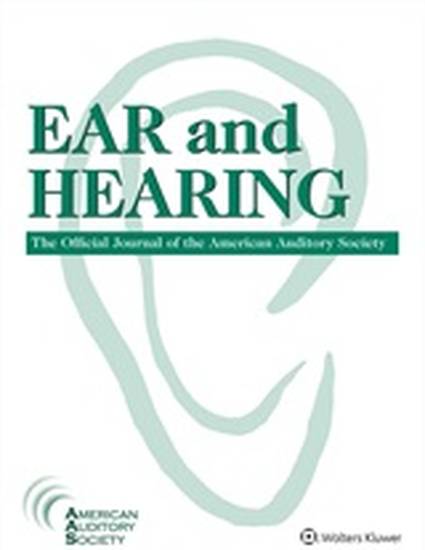
Article
Auditory characteristics of children with autism
Ear and Hearing
(2006)
Abstract
Objectives: The objectives of this study were (1) to describe the auditory characteristics of children with autism relative to those of typically developing children and (2) to describe the test-retest reliability of behavioral auditory test measures with this population of children with autism.
Design: Audiometric data were obtained from 22 children diagnosed with autism and 22 of their typically developing peers. The audiologic test battery consisted of behavioral measures (i.e., visual reinforcement audiometry, tangible reinforcement operant conditioning audiometry, and conditioned play audiometry) and physiological measures (auditory brain stem response audiometry, distortion product otoacoustic emissions, and acoustic reflexes).
Results: Children with autism had physiologic test results equivalent to their typically developing counterparts. That is, no differences in auditory brain stem response audiometry, distortion product otoacoustic emissions, or acoustic reflex results were noted between the children with autism and typically developing children. However, behavioral measures revealed that about half of the children diagnosed with autism presented pure-tone averages outside of normal limits (i.e., >20 dB HL), although their response thresholds to speech were within normal limits. All behavioral test results were within normal limits (i.e., ≤20 dB HL) for the typically developing children. In addition, test-retest variability was typically 15 dB or greater for children with autism as compared with variability of 10 dB or less for most of the typically developing children.
Conclusions: Children with autism demonstrated essentially equivalent results on a battery of physiological auditory tests as those obtained from typically developing children. However, on average, behavioral responses of children with autism were elevated and less reliable relative to those of typically developing children. Furthermore, approximately half of the children with autism demonstrated behavioral pure-tone averages outside of the normal hearing range (i.e., >20 dB HL) despite having normal to near-normal hearing sensitivity as determined by other audiometric measures.
Keywords
- Autism,
- Auditory characteristics
Disciplines
Publication Date
August, 2006
DOI
10.1097/01.aud.0000224981.60575.d8
Citation Information
Tharpe, A.M., Bess, F.H., Sladen, D.P., Schissel, H., Couch, S., & Schery, T. (2006). Auditory characteristics of children with autism. Ear and Hearing, 27(4), 430-441.
